As an architect or an interior designer trying to get new clients, understanding your customers’ level of awareness can be the game-changer that sets you apart.
Whether you’re attracting clients through referrals or targeted advertising, knowing how aware potential clients are of their problems and the solutions you offer is crucial.
This understanding allows you to connect more effectively, tailor your marketing strategies, and ultimately, build a strong and recognizable brand. In this blog post, we’ll explore the four levels of customer awareness and provide actionable strategies to engage with clients at each stage.
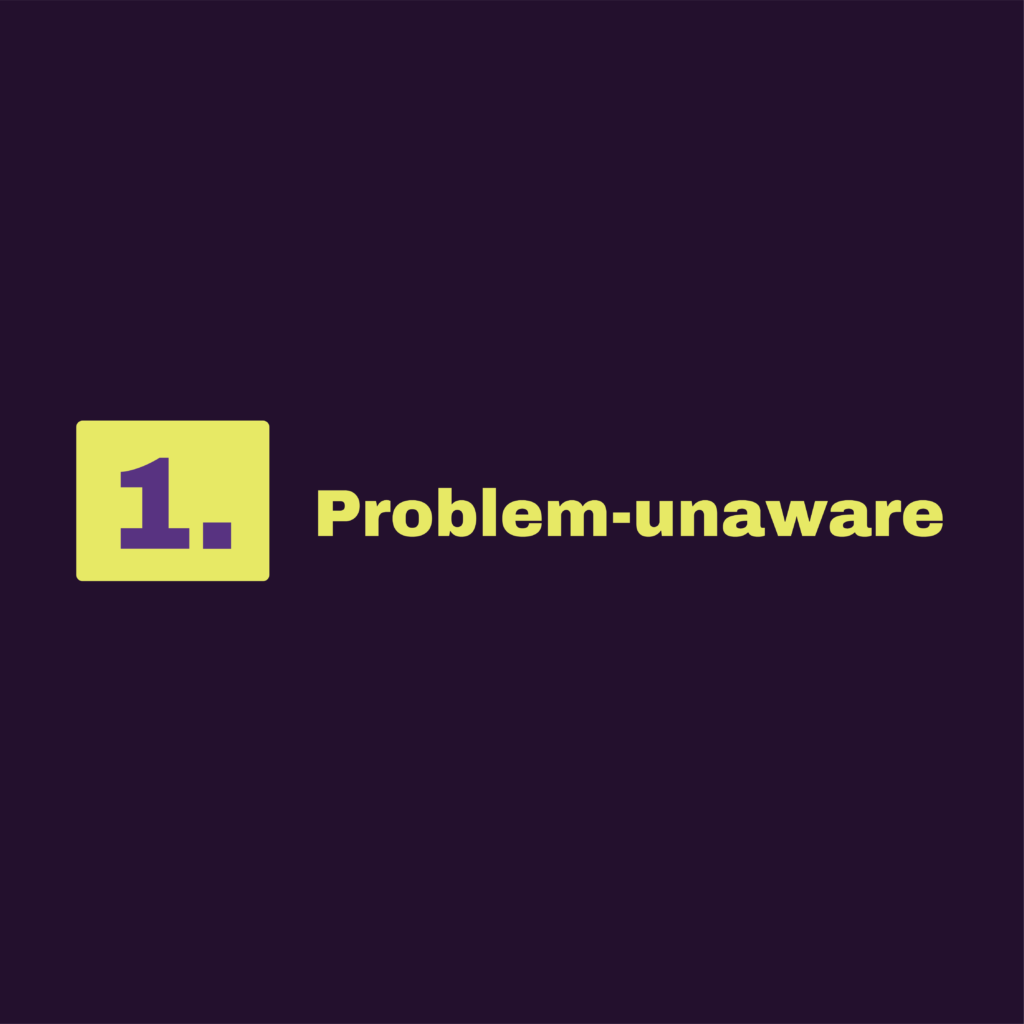



Customers can be at different levels of awareness:
- Unaware of the Problem: They don’t realize they have an issue that needs solving.
- Aware of the Problem, Unaware of Solutions: They know they have a problem but don’t know the solutions available.
- Aware of the Problem and Solutions, but Unsure Which Studio to Choose: They are familiar with their problem and potential solutions but are uncertain about which provider to select.
- Considering Purchasing from You: They are ready to make a decision and are evaluating their final options.
Level 1: Unaware of the Problem
At the first level of customer awareness, potential clients are unaware that they have a problem that needs solving. They may be experiencing discomfort or inefficiency in their spaces but haven’t yet identified these issues as solvable problems. This is where your brand can make a significant impact by bringing these hidden problems to light.
The Power of Storytelling
To engage clients at this stage, storytelling is a powerful tool. Narratives that resonate with their daily experiences can help them recognize the problems they’ve overlooked. By sharing relatable stories, you can create a connection and gently guide them towards awareness.
For example, imagine a client living in a home with an inefficient layout. They might feel frustrated with underutilized spaces and the inability to enjoy their home fully. By crafting a story around this scenario, you can illustrate how common this issue is and hint at the possibility of a solution.
Targeted Advertising
Investing time and energy in targeted advertising is crucial at this stage. Use ads to showcase how a poorly designed space can negatively impact daily life or business operations. Highlighting these consequences can prompt potential clients to reconsider their current situation.
A compelling ad might feature a scenario where a business struggles with productivity due to a chaotic office layout. This can trigger recognition in viewers who face similar challenges, prompting them to seek your expertise.
Real-Life Case Studies
One effective approach is to share real-life case studies. Describe a client who faced challenges due to an inefficient home layout. Detail their initial struggles, such as underutilized spaces and frustration with their living environment. Then, explain how your design services transformed their space and improved functionality and satisfaction.
For instance, a narrative could describe a family who invested in a high-end home but couldn’t fully enjoy it due to poor space planning.
By redesigning their layout, you helped them maximize their living areas, creating a harmonious and enjoyable home environment. This not only builds a connection with potential clients but also demonstrates your problem-solving capabilities.
Relevance Even for Referred Clients
Even if most of your clients come through word-of-mouth referrals, addressing their needs at this stage is still relevant.
A client may approach you with a specific problem they are aware of, but through your expertise, you can identify and address other issues they hadn’t considered. This comprehensive approach not only solves their immediate problem but also enhances their overall experience, reinforcing the value of your services.
A referred client, before reaching out, might check your social media, and posts that are targetted for potential clients at 1st level of awareness might give them aha-moment. They might identify problems that they didn’t know they had before.
Level 2: Aware of the Problem, Unaware of Solutions
Once potential clients recognize they have a problem, they enter the second level of awareness: they know something is wrong but are unaware of the solutions available. This is a critical stage where you can position your brand as the expert that provides the answers they need.
Tell them about the solutions available for their problems. Share them gracefully, even if some of them are DIY. The point here is to be as helpful as you can be and guide the potential clients from the problem-aware to solutions-aware (3rd) stage.
Importance of Educational Content
At this stage, educational content is your most powerful tool. By providing valuable information, you help potential clients understand the range of solutions available, positioning yourself as a knowledgeable and trustworthy resource.
This approach not only addresses their immediate concerns but also builds long-term credibility.
SEO and Blog Posts
To effectively reach and engage these clients, focus on creating SEO-optimized blog posts that address common design problems and offer practical solutions. By targeting specific keywords and phrases that your audience is likely searching for, you can attract organic traffic to your website.
For instance, write detailed articles on topics like “How Proper Space Planning Can Enhance Both Aesthetic Appeal and Functionality.”
In these posts, provide insights into various design challenges and how they can be resolved through thoughtful planning and expert execution. Include tips and advice that demonstrate your expertise and give potential clients a taste of what they can expect from working with you.
I have 2 favorite ways I see successful interior design business owners use and it has worked wonders for me as well: video content and Pinterest.
TikTok (Youtube) has become a search engine where we find solutions to our problems, once we identify them. People find businesses that can solve their problems.
While most architecture and interior design businesses are location-based, video content can transcend geographic limitations:
You can attract Relocating Clients. People planning to move to your area might discover your services online and contact you in advance, providing a steady stream of potential clients.
You can also offer virtual Consultations or create a productized service package.
Georgina Wilson is a great example of doing this and honestly, she is killin’ it.
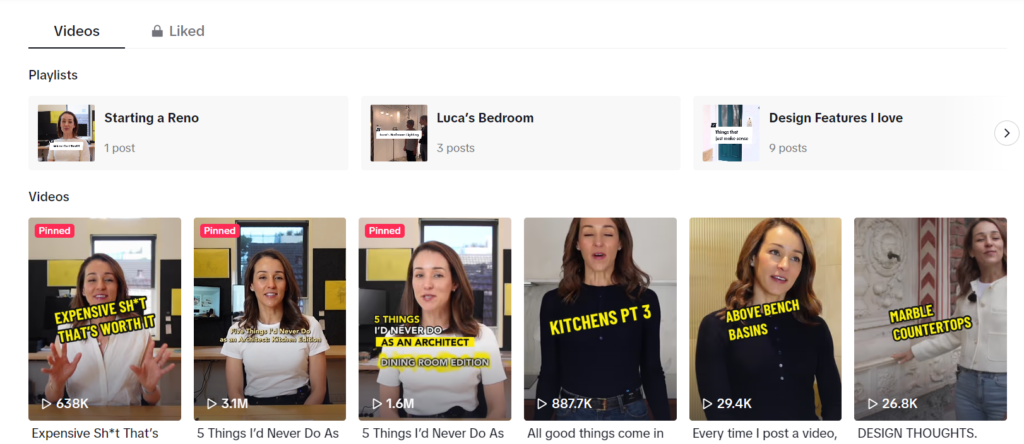
She converts the global audience by offering location-independent services, such as a virtual consultation or floor plan review.

In addition to Tiktok & Youtube, another (my absolute favorite) way to reach a broader audience is Pinterest.
For the record, this is my account growth past 90 days: I have gained 2.56M impressions and 21.22K outbound clicks to my website ONLY from Pinterest.
I have to mention that this is my Pinterest account dedicated to my Home Decor and Interior Design blog, which I am planning to monetize with remote / virtual design service soon.
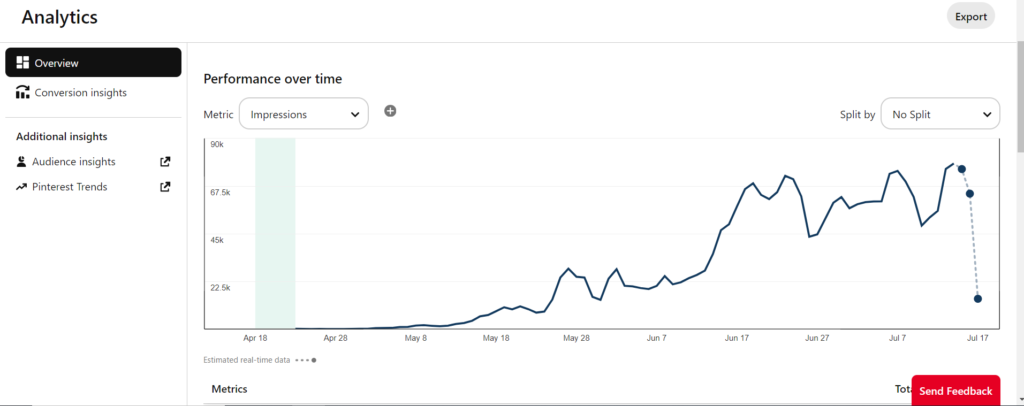

Before you argue that Pinterest is not applicable for location-based businesses, let me tell you: it depends on the location.
If you offer services in the US, chances are, your potential clients are searching for related keywords on Pinterest as well: majority of Pinterest traffic is women from the US.
Here are some examples of location-specific keywords people are actually searching for on Pinterest:
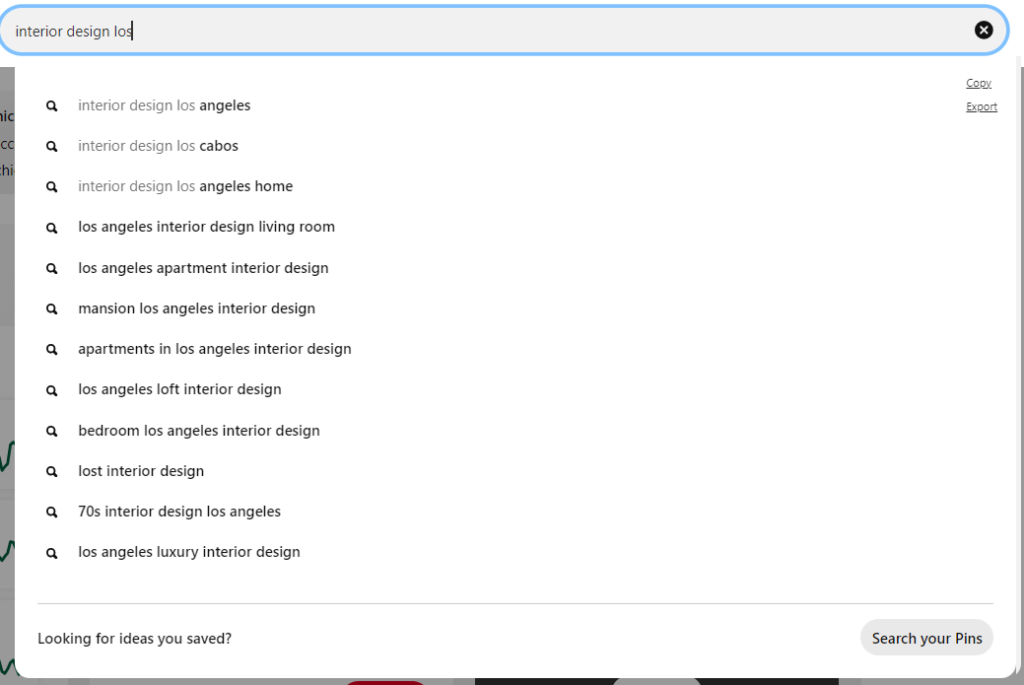
If you need help with keyword research, don’t hesitate to reach out. If I can grow my account to 2.56M views in 90 days, I can help you out as well!
What is the right type of content at 2nd stage of buyer awareness
When creating content for potential clients at 2nd level of awareness (problem-aware) Incorporate real-life examples and case studies to illustrate your points.
For example, describe a project where a client faced a common issue, such as a poorly designed kitchen layout. Detail the steps you took to redesign the space, the challenges you overcame, and the final results. Highlight how the new design improved both the functionality and aesthetics of the space.
You get clients from referrals. Is blog and video content still useful?
The short answer is: yes.
Even clients who come to you through referrals can benefit from educational content. They may know they need architectural or design services but might not be aware of all the benefits and options you offer.
Creating content unexpectedly helps you in this situation: you educate your future clients about your process. Consider it as pre-boarding training about being a good client and getting maximum results from working with you.
you ensure that even referred clients are fully informed about the scope of your services, reinforcing your position as an expert.
In addition to that, when you put out great useful content consistently, your former clients will have better incentive to refer you to their friends further: everyone wants to be helpful to their friends and when your business looks helpful and delivers value consistently, people tend to share it with others more.
Level 3: Aware of the Problem and Solutions but Unsure Which Studio to Choose
At the third level of customer awareness, potential clients recognize they have a problem and are aware of the available solutions. They have searched for solutions and (hopefully) have found the value in the content you share.
However, they are unsure about which studio to choose for their project. This is a crucial decision-making stage where your brand identity and differentiation become essential in guiding clients to select your services over competitors.
The Importance of a Strong Brand Identity
A well-defined brand identity sets your design business apart from the competition. It communicates your unique value proposition, reflects your design philosophy, and reinforces the quality of your work. A strong brand identity creates an emotional connection with potential clients, making it easier for them to trust and choose your studio.
The image you project is directly proportional to how much you can charge. This is where being VERY specific about particular problems you solve becomes so important. The more specific your solution, the higher you charge.
Clients who believe they have a $30K design problem, are not going to hire an architect who has a $500 solution.
And you can’t charge $30K for a solution if your brand gives DIY vibes.
Your brand is the Placebo
in 2015 the Australian Competition and Consumer Commission (ACCC) took legal action against Reckitt Benckiser for selling four Nurofen products—Migraine Pain, Tension Headache, Period Pain, and Back Pain—claiming each targeted a specific pain.
The ACCC found that all these products contained the same amount of the same active ingredient, ibuprofen lysine, and were often sold at higher prices than the basic Nurofen brand despite being pharmacologically identical.
While the ACCC’s findings were scientifically accurate, Rory Sutherland suggests that Reckitt Benckiser should have gone even further with their marketing. They propose creating more specific variants, like “I Can’t Find My Car Keys Nurofen” or “Nurofen for People whose Neighbours Like Reggae,” where the only difference would be the packaging and the promise, not the ingredients.
Promoting something as a cure for a narrowly defined condition, as Nurofen did, also increases placebo power, as does raising the price or changing the colour. So everything the company was doing added to the efficacy of the product.
How to set yourself apart
When it comes to setting yourself apart, there are 2 main components: strategy, messaging, and visual identity. They are sequential and work together.
Strategies to Differentiate Your Studio
1. Unique Selling Proposition (USP)
- Identify Your USP: Clearly define what makes your studio unique. This could be a signature design style, a specialized service, or an innovative approach to problem-solving. Communicate this USP prominently on your website and marketing materials.
2. Client Testimonials and Case Studies
- Showcase Success Stories: Display client testimonials and detailed case studies on your website. Real-life success stories provide social proof and help potential clients envision the benefits of working with you.
- Highlight Transformation: Emphasize the transformation you brought to your clients’ spaces, focusing on both aesthetic improvements and functional enhancements.
3. Online Presence and Engagement
- Website and Social Media: Maintain an active and engaging online presence. Regularly update your website and social media profiles with fresh content, including project updates, design tips, and industry insights.
- Interactive Content: Create interactive content such as quizzes or design consultations that engage potential clients and help them understand how your services can meet their needs.
4. Personal Connection
- Offer Consultations: Provide free initial consultations to discuss potential projects. This allows you to build a personal connection, understand the client’s needs, and demonstrate your expertise.
- Responsive Communication: Ensure your communication is prompt, professional, and personalized. Quick and thoughtful responses can make a significant impact on a client’s decision-making process.
Even clients who come to you through referrals need reassurance that they are making the right choice. A strong brand identity and clear differentiation strategies reinforce the positive recommendations they received and help them feel confident in their decision to choose your studio.
Level 4: Considering Purchasing from You
At the final level of customer awareness, potential clients are aware of your brand and are seriously considering purchasing your services.
They have identified their problem, understand the solutions, and have shortlisted your studio as a potential provider.
The focus at this stage is on making the buying process as seamless and enjoyable as possible to ensure they choose your services over any remaining competitors.
In addition to clear navigation on your website and easily findable contact details, make sure to respond to inquiries and consultation requests as quickly as possible.
These two things have been a game-changer in my business: The onboarding process that is streamlined through the welcome package. You can do the same.
Outline a clear and transparent onboarding process for new clients. Explain the steps from the initial consultation to project completion, so clients know what to expect.
My process looks like this: after the initial call I set up client portal and send invitation to the client. In the client portal they can find a short welcome video of me guiding them through using the client portal.
I have a dedicated section for Current Updates where the client can see the message and the next step they need to take.
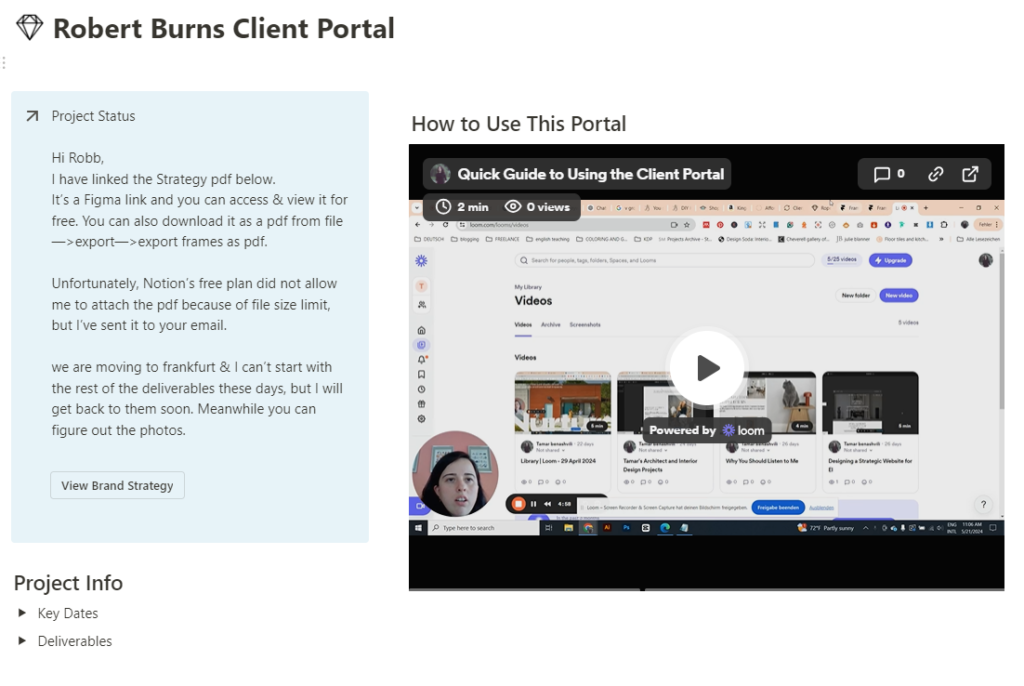
In the same client portal I include all the key dates for the project (based on the call we had) and deliverables.
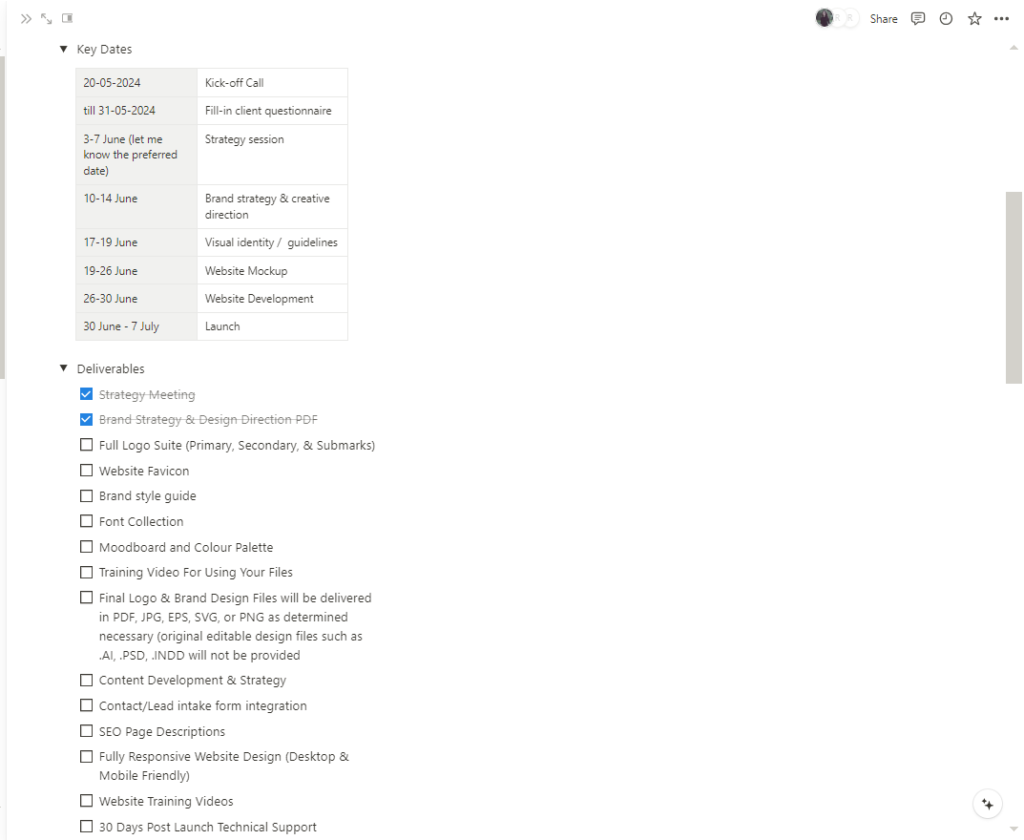
The client an also find a detailed project proposal, contract and the invoices as well as things that need to be done.

This way, the client always knows how the project is moving forward and if there is anything they need to do or know.
Seamless client experience is the key to getting referrals and as we both know, the best type of clients are those who come from the referrals.
But on this, in another post!
Conclusion
In this post we covered how important it is for your business to understand the level of awareness of your potential clients and let them find you at each stage of their journey.
We covered how to market yourself to those who are not even aware they have a problem, or are aware of the problem but not the solution, who are aware of solutions, and who are aware of brand.
At each stage of awareness the rules of the game change, and you should make sure to meet your buyers at where they are, then guide them across the bridge where their dream outcome waits for them.
If you find value in this blog post, make sure to share.
If you need a personalized strategy, check out my website and don’t forget to follow me on Linkedin, Tiktok and Instagram




